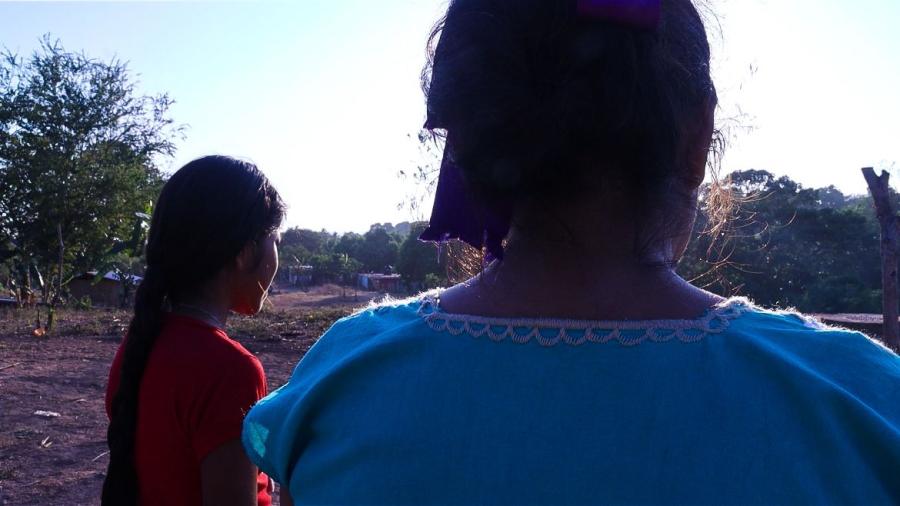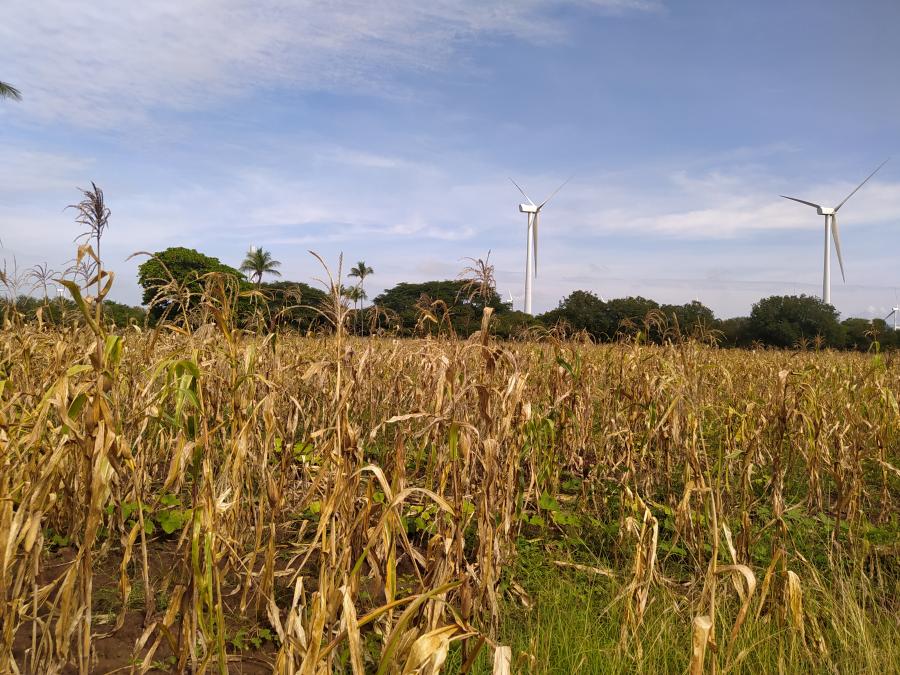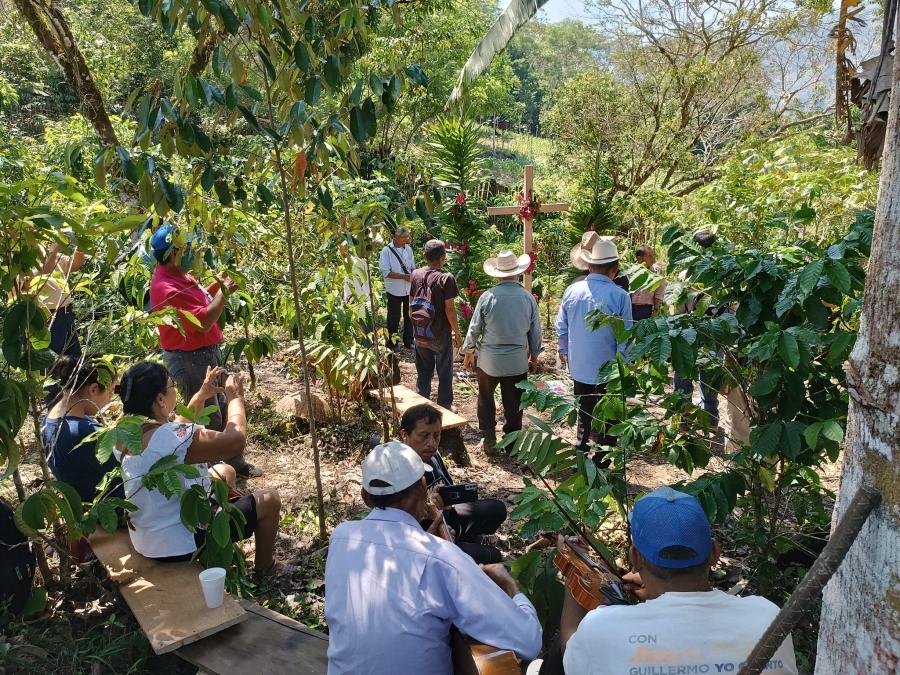Economic development - one of the most controversial phrases of our time. Third World nations relegated to the "underdeveloped" end of the continuum have struggled to define on their own terms just what is meant by "economic development." This redefinition has led frequently to a critical stance toward unbridled capitalist development. Documents such as the Hammarskjold report (1976), written by both Third and First World leaders, call for development shaped by the satisfaction of human needs, self-reliance, endogenous growth, harmony with the environment and structural transformation in the economy, society and polity.
Goals such as those articulated by the Hammarskjold report force us to look closely at the results of economic development at the local level. Each case must be evaluated by its internal success as well as in relation to broader goals. Here, the specific case of craft industry development is evaluated in an indigenous Zapotec community in southern Mexico, the town of Teotitlan del Valle.
Teotitlan provides an interesting and perplexing example of the relationship between capitalist development, stratification and ethnic identity. For more than 30 years, Teotitecos have produced rugs and blankets to sell to tourists and now directly in the US and Europe. Census information, oral histories and local opinion confirm that the community is currently benefiting from the production of weaving for export to the US. The overall standard of living has risen in the community. Ritual has become refocused but remains an integral part of family and community life. Examination of the history of development in the community provides useful insights for how indigenous communities can appropriate economic development for their own use. Community control of resources and the maintenance of a strong local ethnic identity are critical in this process.
Until the 1950s Teotitlan had an economy based on subsistence agriculture. Many households also wove rugs for a local market. During the 1950s the economy in Teotitlan was dramatically affected by two external forces - the arrival of tourism to Oaxaca through the completion of the Pan American Highway and the migration of Oaxacans to the US through the second U.S. Bracero Program. By the end of the 1960s most households in Teotitlan had one member who had migrated to the US; and tourism had become the second biggest income generator in Mexico.
In Teotitlan, subsistence farmers largely abandoned the communal cultivation of community lands and became weavers in the growing treadle-loom industry. The distribution network for the rugs and blankets produced in Teotitlan grew beyond southern Mexico to include places such as Acapulco, Mexico City, Tijuana, Ciudad Juarez, many parts of the southeastern US and some cities in Europe. US importers began to visit the community in force in the late 1970s when the Mexican peso underwent a major devaluation.
Rapid expansion in the market for Teotiteco goods affected the organization of production. Between 1970 and 1980 the merchant sector tripled in size from 35 to 110 household. Piecework operations became the predominant mode of production with merchants providing weavers with materials and designs and buying their finished products by the piece. Independent weaver households also continued to produce. Teotitlan merchants developed contractual relationships with three other neighboring communities who began to produce on a larger scale.
The expansion of weaving production was paralleled by change and growth in local ritual. Prior to the 1960s, most of the community's ritual energy went toward Mayordomias, the sponsorship of cult celebrations for local saints and virgins. Recently the focus of ritual has shifted to ceremonies associated with households such as baptisms, confirmations, weddings and parties for family saints. The content of the mayordomia system has been transferred to these other types of ceremonies. Ritual participation is now greater than it was during the 1950s and most households devote a significant portion of their income and labor time to its celebration. Teotitecos pride themselves on throwing the most extravagant fiestas in the region.
Of course, development in Oaxaca has not proceeded without government input. The Mexican government has used tourism along with economic policies encouraging craft industries as an alternative income-generating strategy in rural areas to try and raise the standard of living of the peasant population. During the 1960s the state government of Oaxaca formed BANFOCO (Banco de Fomento de Cooperatives) in an attempt to sponsor cooperatives for craft production throughout the Oaxaca Valley. The primary activity of the bank was to extend credit through loans to artisans for the purchase of materials.
However, a BANFOCO weaving cooperative, formed in Teotitlan with an original membership of only eight people, was shortlived. While the cooperative provided credit for artisans. Differences in cooperative members' abilities and talents also translated into long disputes about how individuals should be paid. Most cooperative members left and made contacts with Oaxaca merchants who paid them more than they had made working with the BANFOCO cooperative and taught them merchandising skills as well.
The second government craft development program came through FONART (Fondo Nacional de Artesania), the offspring of BANFOCO. According to a Oaxaca FONART official, the mission of FONART is to "conserve, rescue and promote popular and traditional art with commercial support, credit and through supplying primary materials." FONART has a series of national stores which have huge inventories of crafts from all over Mexico. In some cases FONART supplies artisans with material and credit and buys their merchandise to sell in national FONART stores. In other cases, FONART merely acts as a market for artisans, buying their finished products.
FONART worked in Teotitlan from 1971 to 1983. The original program was supposed to provide credit to those weavers who were producing "traditional" designs. FONART provided loans for the purchase of wool and yarn. The membership of the cooperative was small for most of its existence but ballooned briefly to 200 when the cooperative received a large sum of money to purchase wool yarn directly in Tlaxcala and Puebla. Because cooperative members had few skills in bargaining with industrial bureaucrats and in internal management, the purchase of the wool yarn never happened and the cooperative fell apart. The group was also plagued by problems of jealousy between local members vying for control. Today FONART continues to buy a small quantity of rugs and weavings from some of the largest merchants in Teotitlan.
When asked about the history of the government sponsored cooperative in Teotitlan, mot weavers state that they prefer to make their own contacts with clients or to simply produce for local merchants. They emphasize that unlike the government, which often was unable to pay for products when weavers needed to sell them, local merchants who are often family members or related through compadrazgo (ritual kinship) will provide credit on demand and pay them a good price for their work. Weavers prefer to work through local contacts, who are trusted members of the community, rather than through outsiders. They find that they get better terms.
While Teotitecos have by and large resisted government efforts to organize cooperatives in their community, a network of cooperation does exist. A careful examination of the relations of production in the weaving industry would reveal that people working together have close family and compadrazgo ties with one another. Fictive kinship and family ties provide a network of cooperation in the weaving industry. For example, most weavers receive interest-free loans from merchants who are often relatives or compadres as well as employers. Merchants also supply weavers with primary materials. Because there is a shortage of weaving labor due to high market demand, weavers often have more work than they can handle. In deciding which work to do, weavers give priority to requests from relatives or compadres. Since the entire community can be traced to about 25 families, everyone in the community has at least one family or fictive kinship tie with everyone else. These ties bind together the community in both production and ritual.
A further reason for the community's rejection of government sponsored cooperatives comes from a desire to support enterprises which originate in the community. Local decision-making is made in open meetings led by local authorities. Members of the community decide what projects the community will undertake. In order to participate in community decision-making and to have rights to community resources such as land, water and forest areas, each household is required to provide a male laborer for approximately 10-15 days of communal labor per year and to accept appointments to civil cargos. Civic jobs such as mayor, judge, police and school committees are all done on a voluntary basis. Female household heads and children replace the male labor lost by a household during civil cargo appointments which may last up to three years at a time.
The influx of cash brought into Teotitlan through the export of weavings has been invested in public work projects, including the construction of two schools, a new marketplace, several basketball courts, two bridges and a revamping of the irrigation system. Currently the community is undertaking an extensive restoration of its church which dates to the 17th century. All of these community financed projects have involved substantial communal labor contributions in addition to the use of specialized construction workers. When a new project is decided upon, a local committee is formed and goes door to door to raise money and to recruit laborers.
People in Teotitlan are proud of the face-lift they are giving their community. They are also aware of the benefits of carrying out such projects independent of the national government. Receiving funds from the government for public works projects is done in return for community loyalty to the PRI (Institutionalized Revolutionary Party), the national political party that has been in power since the Mexican Revolution. While Teotitlan does not actively oppose the PRI, community members are reluctant to do more than cooperate with party officials when they come to monitor state and federal elections. Municipal elections do not involve the participation of political parties.
When state or federal government officials want to monitor community activities Teotitecos react with strong indignation. They feel they have the right and ability to run all of their community affairs and resent outside interference. Suggestions of state taxation on looms has been met with strong local protests. While Teotitecos welcome tourists and foreign importers who come to purchase their wares, they do not tolerate behavior that they deem to be inappropriate or limiting to the freedom of people in the community. Several Americans have been forcibly expelled from the community and outside merchants have frequently been discussed at town meetings.
Economic development in Teotitlan has been capitalist development, but with a twist. It has been development controlled to a large extent by indigenous people in their own community. While Teotitecos didn't create the market for their product, they did not respond to it in effective and creative ways. There was no technology transfer to Teotitlan other than the introduction of factory spun wool, and all producers in the community now own their looms. There is significant occupational mobility in Teotitlan. Most local merchants began as pieceworkers or independent producers. Local authorities continue to regulate the behavior of community members as well as outsiders in accordance with the traditional values and customs of the community.
The community has retained a strong measure of control over how expansion in production has taken place and has actively worked to integrate it with local cultural identity. Teotitecos do not feel that the changes in their community have happened without their active participation. They have a strong desire to control what happens in their community and to take credit for positive results. The efforts of the Mexican government to organize cooperatives in Teotitlan were largely unsuccessful because they were not integrated with local networks of production and distribution attached to kin relations.
After attempting to work in organized programs with outsiders, most Teotitecos prefer to personally develop outside contacts as they become necessary. Today, Teotitecos are firm in their demands that the traffic of tourists, importers and curiosity seekers not infringe on community institutions. Beneath an exterior of acute business sense, Teotitecos are deeply committed to defending their right to control their own community and to conserve important local institutions.
Article copyright Cultural Survival, Inc.



